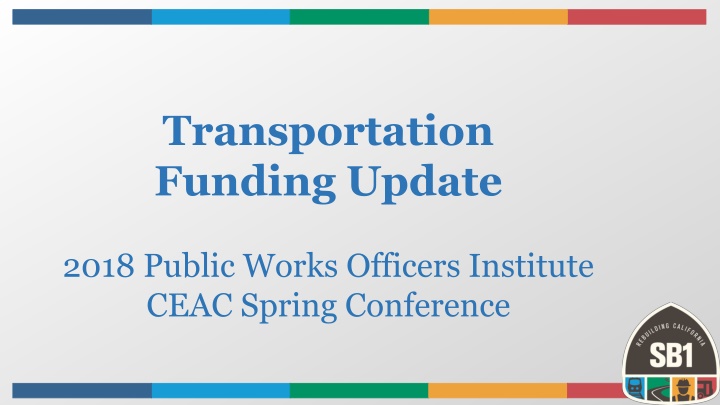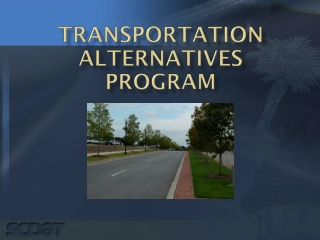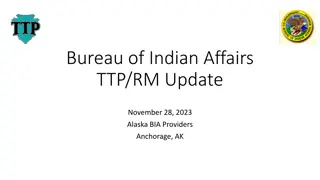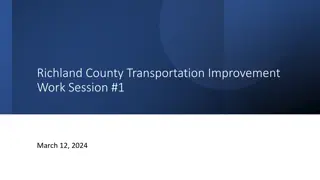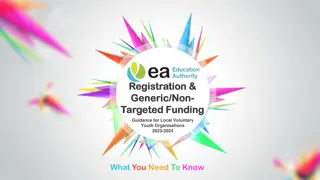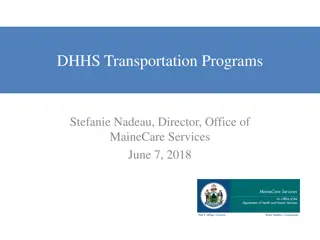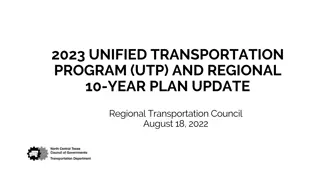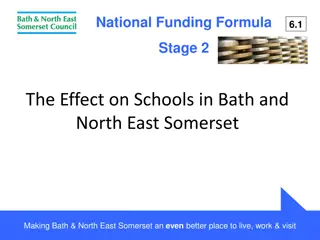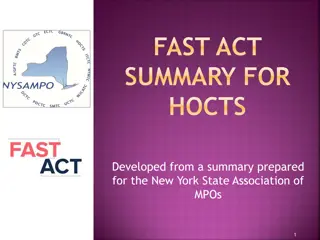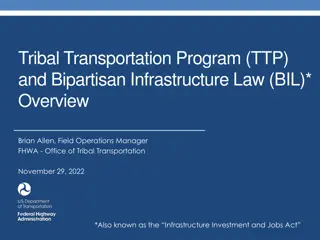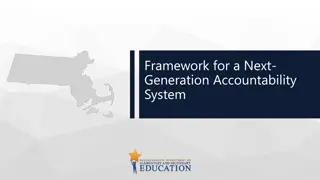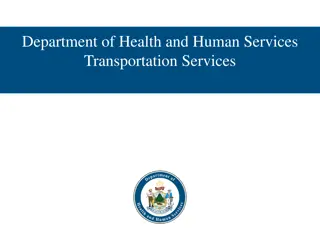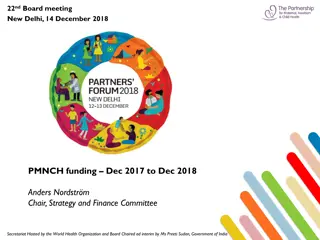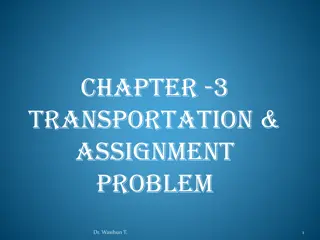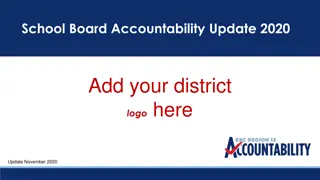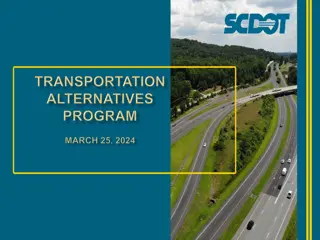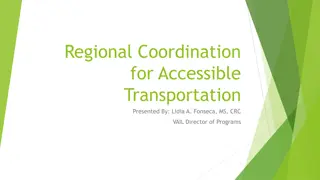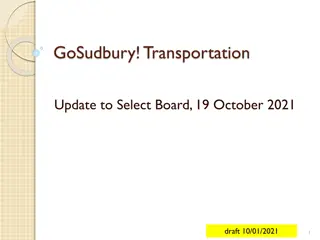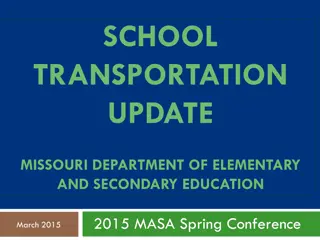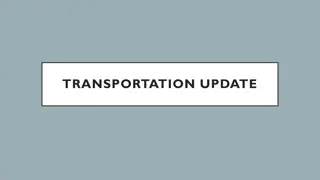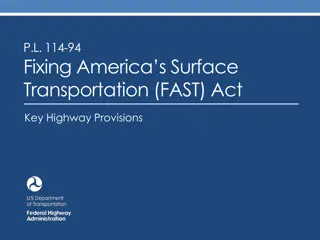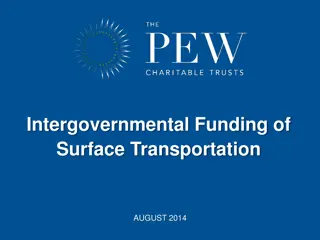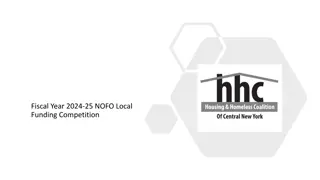Comprehensive Update on 2017-2018 Transportation Funding and Accountability Measures
This detailed update covers the key aspects of the 2017-2018 transportation funding initiatives, including the SB 1 & ACA 5/Prop 69 package, tax increases involved, phased-in revenue implementation, accountability measures, and where the funding is allocated. It discusses the significance of the legislation signed into law, the taxes included in the deal, transparency requirements, and the timeline for revenue distribution. The update also emphasizes the importance of accountability, oversight, and planned projects in ensuring effective utilization of transportation funds.
Download Presentation

Please find below an Image/Link to download the presentation.
The content on the website is provided AS IS for your information and personal use only. It may not be sold, licensed, or shared on other websites without obtaining consent from the author.If you encounter any issues during the download, it is possible that the publisher has removed the file from their server.
You are allowed to download the files provided on this website for personal or commercial use, subject to the condition that they are used lawfully. All files are the property of their respective owners.
The content on the website is provided AS IS for your information and personal use only. It may not be sold, licensed, or shared on other websites without obtaining consent from the author.
E N D
Presentation Transcript
Transportation Funding Update 2018 Public Works Officers Institute CEAC Spring Conference
Topics 2017 Transportation Funding Package Highlights SB 1 Repeal Efforts Frequently Asked Questions Economic Study Homework Assignment!
SB 1 & ACA 5/Prop 69 Transportation funding package SB 1 and ACA 5 (Prop 69) signed into law April 2017 SB 1 The Road Repair and Accountability Act of 2017 Approximately $5 billion/year in new revenue no sunset Prop 69 extends constitutional protections to SB 1 revenues not already protected Prop 69 will go to voters for approval June 2018
What taxes were part of the deal? 12-cent gas excise tax increase Reset price-based excise tax at 17.3-cents 20-cent diesel excise tax increase 4% diesel sales tax increase $25-$175 annual transportation improvement fee based on vehicle value $100 annual zero emissions vehicle fee CPI adjustments on excise taxes/fees
Accountability & Transparency Cities/counties submit annual list of planned projects and list of expenditures to CTC FY 2018-19 Project List due May 1, 2018 FY 2017-18 Expenditure Report due October 1, 2018 Office of Inspector General to conduct audits and investigations of transportation programs Additional CTC oversight of the development and management of SHOPP program CTC oversight, development and administration of competitive grant programs
How will revenues be phased-in? New fuel taxes effective November 2017 First payment to cities, counties and state Jan. 30 The value-based transportation improvement fee effective January 2018 The price-based excise tax will be reset July 1, 2019 (maybe) One more adjustment regular adjustment scheduled for July 1, 2018 Zero emissions vehicles will begin to pay an additional registration fee for road maintenance in 2020
Where does the funding go? $1.5 billion for state highways $1.5 billion for local roads $750 million for transit operations and capital $400 million for state bridges $300 million for goods movement/freight projects $250 million for the new Solutions for Congested Corridors program $200 million for state-local partnership $100 million for the Active Transportation grants $25 million for Freeway Service Patrol $25 million for local planning grants $7 million for UC and CSU Transportation Research
Statewide Project & Funding Information Rebuilding California Search by lead agency, type of project California Transportation Commission Guidelines for SB 1 programs, oversight activities California State Association of Counties and League of California Cities Annual revenue projections, local agency outreach tool kit
SB 1 Under Fire Effort to repeal SB 1 Collecting signatures, raising money November 2018 General Election Strong opposition campaign Coalition to Protect Local Transportation Investments https://fixcaroads.com/join-our-coalition/
Education & Outreach Educate, don t advocate (on public dime) Know the facts what SB 1 does and does not do. What does SB 1 mean for your community? What benefits, direct and indirect, will community receive? What would happen to your community s infrastructure if SB 1 is repealed? Promote project list adoption, project milestones, project expenditure reports. Use traditional and social media outlets.
Frequently Asked Questions Do SB 1 funds go into the state s General Fund? What guarantees are there that the money will be used to fund transportation improvement projects? Revenues go directly into transportation accounts and are constitutionally protected. All transportation revenues that were loaned in prior decades to the General Fund will have be repaid under SB 1 by 2020.
Frequently Asked Questions, Cont. Why can t California just dedicate existing General Fund revenues to fix transportation? Why not repurpose High Speed Rail (HSR) bonds? SB 1 follows the user-pay model. If the State were to use General Fund revenue, it would have to come from other important programs like healthcare and public safety. In order to repurpose the HSR bond for roads, it would require a vote of the people. The bond was for $10 billion in one time money. It wouldn t come close to solving the state s long-term transportation funding problem.
Frequently Asked Questions, Cont. Are SB 1 funds being used for non-transportation purposes, such as off-highway trails and boating infrastructure? A percentage of the existing gas tax revenue related to fuel sales from boats, agricultural equipment, and other off-highway vehicles (quads, dirt bikes) has always gone toward supporting infrastructure related to these economic and recreational activities. The percent of gas tax revenues collected from these sources is two-percent (2%).
Frequently Asked Questions, Cont. Will SB 1 fund the high-speed rail project? No funds raised from SB 1 will be used to fund high-speed rail. California s state-maintained transportation infrastructure will receive roughly half of SB 1 revenue: $26 billion. The other half will go to local roads, transit agencies and an expansion of the state s growing network of pedestrian and cycle routes.
Economic Study, Cont. Translates to an average of 68,203 jobs each year. An annual savings of nearly $300 per household in California (derived from total user benefits ). Will support the repair, repaving & reconstruction on over 84,000 lames miles on nearly 19,000 miles of roadways. With improved conditions, drivers will see an average of $818 million per year on operating costs.
Economic Study, Cont. Better roads also mean safer roads. Adding up to an average of $8 million per year in additional safety benefits. Enables the replacement of an additional 556 state and local bridges in the first five years. Sales and output by business in all sectors will increase by $11 billion each year. Workers will earn an average of $3.3 billion in wages per year.
A picture is worth 1,000 words
Homework Assignment! Projects, projects, projects! Promote those projects. Get involved in the effort to protect state and local transportation investments. Guidance for public agencies and campaign activities: Institute for Local Government: http://www.ca-ilg.org/sites/main/files/file- attachments/ballot_measure_activities_2018.pdf. Talk to People, influential or otherwise .
